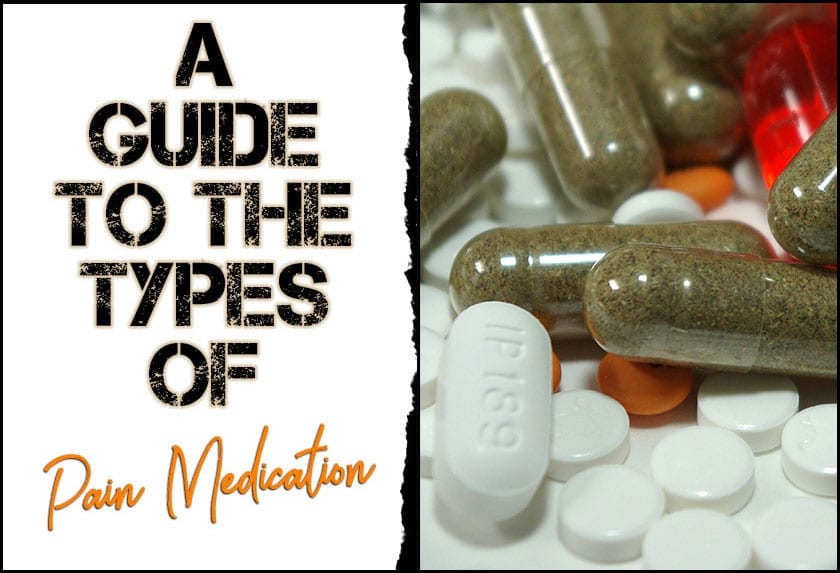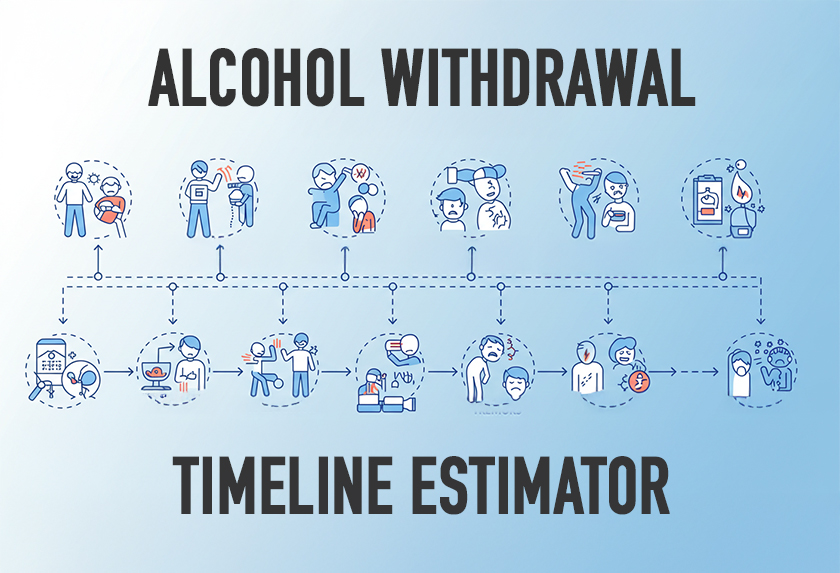The pain process is complicated, meaning that there are a multitude of different pain medications to research and choose from.
These medications are also some of the most commonly used drugs in the United States, and many are highly addictive as well. It’s vitally important to anyone who has experienced or has dealt with drug addiction in the past to be on high alert when it comes to researching and possibly taking pain medication.
What is Pain Medication Used For?
First and foremost, what is pain medication actually used for? Truthfully, most injuries, diseases, and procedures come with some degree of pain, so the uses for these drugs are endless.
However, depending on the type of pain in question, there are many different types and strengths of medication to choose from. For example, a minor headache will typically be treated with an over-the-counter pain reliever such as Advil. Whereas someone with cancer or going through a difficult surgery would need to be prescribed something much stronger by a medical doctor.
The broadest classification of these drugs would be to separate them into nonprescription and prescription. Short term, milder pain like menstrual cramps and mild headaches will typically fall under the needing a nonprescription drug category. Anything more severe or unusual would most likely need to be seen by a professional, where a prescribed drug from them would be more appropriate.
The Types of Pain Medication
When it comes to the actual types of pain medication, there are a lot of different options. Here’s the full list.
Acetaminophen
Acetaminophen is known as an analgesic and is used to relieve pains from muscle aches, headaches, backaches, minor arthritis, toothaches, PMS, and the common cold.
It is known as the following brand names:
- PediaCare Single Dose Acetaminophen Fever Reducer/Pain Reliever
- Little Fevers Children’s Fever/Pain Reliever
- Little Fevers Infant Fever/Pain Reliever
- Tylenol
- Tylenol Arthritis Pain
Acetaminophen will increase the body’s threshold for pain, but it doesn’t really have any effect on inflammation.
Anti-Anxiety Drugs
Next on the list are anti-anxiety predications. These actually have a few different methods of relieving the user of pain. They will reduce anxiety, help the user cope with discomfort, and relax tense muscles.
Sometimes these medications are prescribed on their own, or with a mixture of cognitive-behavioral therapy or other types of therapeutic treatment.
These drugs include:
- Serotonin-norepinephrine reuptake inhibitors: These work by reducing the brain’s ability to reabsorb norepinephrine and serotonin.
- Selective serotonin reuptake inhibitors:These work by stopping the brain’s nerve cells from reabsorbing serotonin.
- Tricyclic antidepressants: These are an older group of antidepressant drugs; however, they are still used for anxiety frequently due to them having fewer side effects.
- Benzodiazepines: These drugs are actually sedatives, and reduce any physical symptoms of anxiety, like tense muscles. They are also great for encouraging relaxation; however, they can be addictive and are less effective over time.
Anticonvulsant Drugs
Some anticonvulsant drugs are able to relieve the pain that comes from neuropathies, which is possible because of their stabilization of nerve cells.
Anticonvulsant drugs are used to control seizures or to stop ongoing seizures. The list of these is fairly long and includes:
- Clonazepam
- Diazepam
- Midazolam
- Carbamazepine
- Phenobarbital
Antidepressants
Antidepressants are able sometimes to reduce pain transmission through the spinal cord. Not every drug in this category is able to do so, but some of them are. Particularly, tricyclics are known for this.
These drugs typically work best for certain types of pain, specifically nerve damage, facial pain, tension headaches, migraines, fibromyalgia, back pain, and pelvic pain.
Tricyclic antidepressants include:
- Doxepin
- Amitriptyline
- Clomipramine
- Imipramine
- Desipramine
- Nortriptyline
Corticosteroids
Corticosteroids are typically given as an injection into musculoskeletal injuries and provide the person getting them with incredible anti-inflammatory effects. They can also be taken by mouth as well, and are great at relieving pain from arthritis.
Muscle Relaxants
Next on the list is muscle relaxants, which do a great job of reducing pain from tense, stiff muscle groups. It is probably done through sedative action in the central nervous system.
These can be especially great for neck and back pain, here are some of the best muscle relaxants for the job:
- Baclofen
- Tizanidine
- Oxazepam
- Chlorzoxazone
- Metaxalone
- Carisoprodol
- Cyclobenzaprine
- Methocarbamol
Nonsteroidal Anti-Inflammatory Drugs
Nonsteroidal anti-inflammatory drugs, also known as NSAIDs, will act on substances in bodies that can cause certain ailments. While they do reduce inflammation, they are in no way related to steroids, which also do the same thing.
NSAIDs work by reducing prostaglandins producing in the body. Prostaglandins are chemicals that promote pain, fever, and inflammation. On top of that, they also protect stomach linings and intestines from acid, they promote normal kidney function, and blood clotting by activating the blood platelets.
These drugs are typically used for arthritis, coughs, colds, headaches, menstrual cramps, and sports injuries.
Opioids
The last type of pain medication on the list is opioids. These drugs are found naturally in opium poppy plants and work in the user’s brain to relieve pain along with other effects.
Opioids range from painkillers to heroin. It’s a large range of drugs, and they are highly addictive.
The list of opioids includes:
- Fentanyl: Abstral, Actiq, Duragesic, Fentora, and Onsolis
- Codeine
- Hydromorphone: Exalgo, Dilaudid
- Hydrocodone: Zohydro ER, Hysingla
- Hydrocodone/acetaminophen: Vicodin, Lorcet, Norco, and Lortab
- Morphine: MS Contin, Kadian, Morphabond
- Methadone: Methadose, Dolophine
- Meperidine: Demerol
- Oxycodone: Oxaydo, OxyContin
- Oxycodone and naloxone
- Oxycodone and acetaminophen: Roxicet, Percocet
Most of these drugs can be prescribed and taken by mouth, although, Fentanyl is available in patch form as well.
Pain Medication List: Strongest to Weakest
Obviously, some pains are worse than others, meaning that there is a wide range of pain medications to choose from. Here is a ranking of all of the opioids that can be taken for pain, from the strongest to the weakest.
- Fentanyl: It’s estimated that this drug can get up to 100 times more potent than morphine. It works quickly and has a short duration of action. Often times, it is used to prevent pain following surgeries.
- Oxymorphone: This drug is usually used to treat chronic or severe pain and also to aid anesthesia.
- Hydromorphone: It is synthesized from morphine and used usually in hospitals to treat moderate to more severe pain.
- Heroin: A highly addictive drug that combines acetic anhydride with morphine alkaloid.
- Levorphanol: It’s a synthetic painkiller created from racemorphan and used to treat more severe pain.
- Methadone: An opioid used to treat moderate to severe pain. It’s also used to treat dependence on opioids in methadone maintenance programs.
- Oxycodone: Synthesized from thebaine, which is an alkaloid found in the opium poppy.
- Tapentadol: Used to relieve anywhere from moderate to very severe short-term pain.
- Morphine: Created from the morphine alkaloid and used to treat moderate to severe pain.
- Hydrocodone: This is a semi-synthetic opiate that is used predominantly in the United States to treat moderate to severe pain.
- Pethidine: A synthetic painkiller used to treat moderate to severe pain. It’s almost as strong as morphine but does require a higher dosage.
- Codeine: It’s an opioid that treats mild to moderate pain, and is the most commonly taken opiate in the world.
- Tramadol: An opiate painkiller for moderate pain.
- Laudanum: This is the least potent opiate available in the US and UK.
Weaker drugs than these would include nonprescription pain medications, antidepressants, anti-anxiety medication, and the other drug types discussed previously.
Handling Pain Medication and Management
Pain is something that needs to be managed; otherwise, it can hinder everyday life for many people dealing with it. However, for those that struggle with addiction, it can be difficult to know how to handle that pain safely.
Talking to a medical professional is a great first step to see what should be done about pain management. Also, consider discussing the issue with a trusted friend, family member, mentor, or addiction sponsor if necessary. Having support from others and the knowledge of what these drugs can do is a great way to prepare to manage pain properly.













